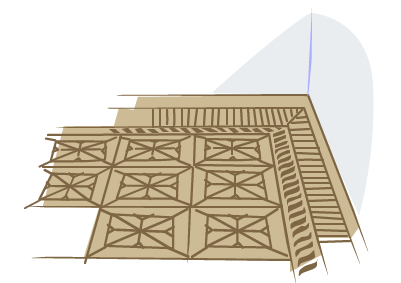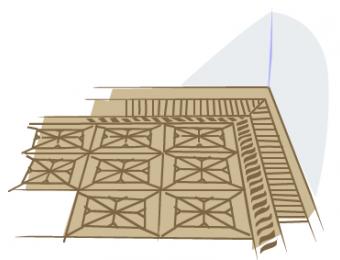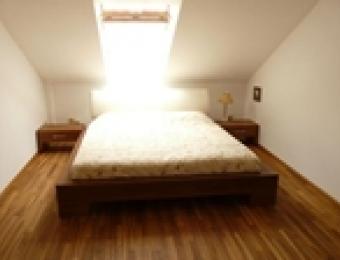
Parquet flooring uses pieces of wood cut geometrically into tiles and fit in a mosaic pattern to create its effect. Almost any type of wood can be used, and frequently many different types are used in the same floor. Deeper wood tones will add elegance and class to a room, while lighter woods will offer a more casual, friendly feel.
Parquetry allows for some intricate handiwork and many different arrangements are possible, though the most popular arrangement is the herringbone style. They are often highly polished, highlighting the wood grain finish even further.
Parquet floors will retain warmth and provide good heat insulation. As a rigid, dense floor though, sound will tend to bounce and carry.
What should I look for?
Because almost any type of wood can be used, the choice of quality really comes down to your installer. Carefully check their previous work to make sure it is up to the standard you expect. If you are doing the floor yourself, ensure the wood you use is cut perfectly, and is free of knots and imperfections that could weaken the tile.
How is parquet flooring installed?
Because of the precise nature of fitting the tiles, it is recommended that you get a seasoned professional do the work for you. Slightly-off angles in tiles laid at the beginning can magnify and ruin the effect further down the line, which is very expensive and time-consuming to fix.
Before installation, the site is cleaned and levelled. Once it's clear, the floor is measured up and chalked in a grid pattern. These lines provide a guide to keep the whole pattern straight. Depending on the pattern used and the size of the tiles, the grid will vary in dimensions. Then, starting from a corner of the grid, adhesive is spread with a trowel over a small section and the tiles are laid in the desired pattern. It is important to note that the adhesive is quick drying, so small quantities are used at a time. Partial tiles are cut to fill spaces where the patterns meet the walls. Once the adhesive is set, the floor is sanded, and is then usually varnished or oiled. It is generally not advisable to stain parquet floors, as different woods can react to stains differently and you may not get the effect you want.
Suitability and maintenance
The eye-catching finish of a parquet floor makes it a highly attractive option for living and entertaining areas like the lounge and kitchen. Because it is good at retaining heat, it can be used in other areas too, such as the bedroom. With enough waterproofing, it could also be used in a bathroom, though special care needs to be taken with stopping moisture seepage. Apartment owners may wish to evaluate the way sound will carry through their home when considering parquetry.
A parquet floor is just as easy to maintain as a tile floor, though more care needs to be taken to prevent scratching the surface. It can be swept and mopped, is water resistant and able to be polished. If the surface should need refreshing, it can be re-sanded several times over the course of its life.
|
Advantages
|
Disadvantages
|





